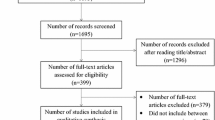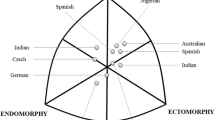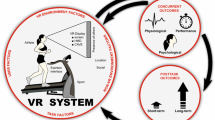Abstract
Football reduces body fat and increases the tone of muscle, constructs strength, flexibility, and stamina. It increases muscle power, bone as well as improvements in walking, running, and jumping.The challenging characteristics in motion capture of football teaching include lack of latency, complexity, and physical interaction analysis of sports performance. In this paper, Deep learning assisted motion capture system has been proposed to enhance bandwidth, the variability of performance, and realistic physical interactions in an accurate manner in colleges and universities. Bidirectional motion analysis is implemented to reduce animation costs and enhance motion capturing data in football events. Network evaluation management technique is introduced to recreate the intricate and realistic physical interactions of unique football teaching colleges and universities. The simulation analysis is performed based on complexity; performance, latency, and efficiency prove the proposed framework's reliability.













Similar content being viewed by others
References
Ahmad U, Song H, Bilal A, Mahmood S, Alazab M, Jolfaei A, Ullah A, Saeed U (2021) A novel deep learning model to secure internet of things in healthcare. Machine intelligence and big data analytics for cybersecurity applications. Springer, Cham, pp 341–353
Brouwer NP, Yeung T, Bobbert MF, Besier TF (2020) 3D trunk orientation measured using inertial measurement units during anatomical and dynamic sports motions. Scand J Med Sci Sports 31:358–370
Canton A, Torrents C, Ric A, Gonçalves B, Sampaio JE, Hristovski R (2019) Effects of temporary numerical imbalances on collective exploratory behaviour of young and professional football players. Front Psychol 10:1968
Chu D, Reyers M, Thomson J, Wu LY (2020) Route identification in the National Football League: an application of model-based curve clustering using the EM algorithm. J Quant Anal Sports 16(2):121–132
Colyer SL, Evans M, Cosker DP, Salo AI (2018) A review of the evolution of vision-based motion analysis and the integration of advanced computer vision methods towards developing a markerless system. Sports Med Open 4(1):24
Ding F, Zhu G, Alazab M, Li X, Yu K (2020) Deep-Learning-empowered digital forensics for edge consumer electronics in 5GHetNets. In: IEEE consumer electronics magazine
Dönmez G, Kudas S, Yörübulut M, Yildirim M, Babayeva N, Torgutalp SS (2020) Evaluation of muscle injuries in professional football players: does coach replacement affect the injury rate? Clin J Sports Med 30(5):478–483
Folgado H, Duarte R, Marques P, Gonçalves B, Sampaio J (2018) Exploring how movement synchronization is related to match outcome in elite professional football. Sci Med Football 2(2):101–107
Gadekallu TR, Khare N, Bhattacharya S, Singh S, Reddy Maddikunta PK, Ra IH, Alazab M (2020) Early detection of diabetic retinopathy using PCA-firefly based deep learning model. Electronics 9(2):274
Gao J, Wang H, Shen H (2020) Task failure prediction in cloud data centers using deep learning. In: IEEE transactions on services computing
Gao J, Wang H, Shen H (2020) Machine learning based workload prediction in cloud computing. In: 2020 29th international conference on computer communications and networks (ICCCN), IEEE, pp 1–9
Goldsmith JA, Trepeck C, Halle JL, Mendez KM, Klemp A, Cooke DM, Zourdos MC (2019) The empty barbell and do weightlifting analyzer systems’ validity versus the OPTOTRAK CERTUS 3D motion-capture system for barbell velocity. Int J Sports Physiol Perform 14(4):540–543
Hanley B, Tucker CB, Bissas A (2018) Differences between motion capture and video analysis systems in calculating knee angles in elite-standard race walking. J Sports Sci 36(11):1250–1255
Ikeda A, Hwang DH, Koike H, Bruder G, Yoshimoto, S, Cobb S (2018) AR-based self-sports learning system using the decayed dynamic timewarping algorithm. In: ICAT-EGVE, pp 171–174
Izzo R, D’isanto T, Raiola G, Cejudo A, Ponsano N, Varde’i CH (2020) The role of fatigue in football matches, performance model analysis and evaluation during quarters using live global positioning system technology at 50hz. Sport Sci 13(1):30–35
Johnson WR, Mian A, Donnelly CJ, Lloyd D, Alderson J (2018) Predicting athlete ground reaction forces and moments from motion capture. Med Biol Eng Compu 56(10):1781–1792
KP S, Alazab M (2020) A comprehensive tutorial and survey of applications of deep learning for cyber security
Lahti J, Mendiguchia J, Ahtiainen J, Anula L, Kononen T, Kujala M, Morin JB (2020) An individualized multifactorialprogramme for hamstring muscle injury risk reduction in professional football: protocol for a prospective cohort study. BMJ Open Sport Exercise Med 6(1):e000758
Lee JK, Lee CJ (2020) Drift reduction in IMU-based joint angle estimation for dynamic motion-involved sports applications. J Korean Soc Prec Eng 37(7):539–546
Manogaran G, Shakeel PM, Fouad H, Nam Y, Baskar S, Chilamkurti N, Sundarasekar R (2019) Wearable IoT smart-log patch: an edge computing-based Bayesian deep learning network system for multi access physical monitoring system. Sensors 19(13):3030
Martin PE, Benois-Pineau J, Mansencal B, Péteri R, Mascarilla L, Calandre J, Morlier J (2019) Sports video annotation: detection of strokes in table tennis task for MediaEval 2019. In: MediaEval 2019 workshop
McDole A, Gupta M, Abdelsalam M, Mittal S, Alazab M (2020) Deep learning techniques for behavioral malware analysis in cloud IaaS. Malware analysis using artificial intelligence and deep learning. Springer, Cham, pp 269–285
Meng X, Li Z, Wang S, Karambakhsh A, Sheng B, Yang P, Mao L (2020) A video information-driven football recommendation system. Comput Electr Eng 85:106699
Ngo TD, Bui TT, Pham TM, Thai HT, Nguyen GL, Nguyen TN (2021) Image deconvolution for optical small satellite with deep learning and real-time GPU acceleration. J Real Time Image Process 18:1–14
Nguyen TG, Phan TV, Hoang DT, Nguyen TN, So-In C (2020) Efficient SDN-based traffic monitoring in IoT networks with double deep Q-network. In: International conference on computational data and social networks. Springer, Cham, pp 26–38
Pulling C, Kearney P, Eldridge D, Dicks M (2018) Football coaches’ perceptions of the introduction, delivery and evaluation of the visual exploratory activity. Psychol Sport Exerc 39:81–89
Rizvandi A, TaghipourGharbi M, Esmaeili M, Ashraf Ganjoee F (2019) The evaluation of performance indicators of coaches in football development. J Human Insights 3(04):248–254
Srinivasan S, Vinayakumar R, Arunachalam A, Alazab M, Soman KP (2021) DURLD: malicious URL detection using deep learning-based character level representations. Malware analysis using artificial intelligence and deep learning. Springer, Cham, pp 535–554
Sriram S, Vinayakumar R, Alazab M, Soman KP (2020) Network flow based IoT botnet attack detection using deep learning. In: IEEE INFOCOM 2020-IEEE conference on computer communications workshops (INFOCOM WKSHPS) 2020 Jul 6, IEEE, pp 189–194
Stamp M, Alazab M, Shalaginov A (2021) Malware analysis using artificial intelligence and deep learning. Springer International Publishing AG, Berlin
Thompson CJ, Fransen J, Skorski S, Smith MR, Meyer T, Barrett S, Coutts AJ (2019) Mental fatigue in football: is it time to shift the goalposts? An evaluation of the current methodology. Sports Med 49(2):177–183
Van der Kruk E, Reijne MM (2018) Accuracy of human motion capture systems for sport applications; state-of-the-art review. Eur J Sports Sci 18(6):806–819
Vinayakumar R, Alazab M, Soman KP, Poornachandran P, Venkatraman S (2019) Robust intelligent malware detection using deep learning. IEEE Access 3(7):46717–46738
Vinayakumar R, Alazab M, Srinivasan S, Pham QV, Padannayil SK, Simran K (2020) A visualized botnet detection system based deep learning for the internet of things networks of smart cities. IEEE Trans Ind Appl 56(4):4436–4456
Xu X, Chen Y, Zhang J, Chen Y, Anandhan P, Manickam A (2020) A novel approach for scene classification from remote sensing images using deep learning methods. Eur J Remote Sens 8:1–3
Yang Z, Rafiei MH, Hall A, Thomas C, Midtlien HA, Hasselbach A, Gauthier LV (2018) A novel methodology for extracting and evaluating therapeutic movements in game-based motion capture rehabilitation systems. J Med Proc 42(12):255
Yurko R, Ventura S, Horowitz M (2019) NFL WR: a reproducible method for offensive player evaluation in football. J Quant Anal Sports 15(3):163–183
Zago M, Sforza C, Dolci C, Tarabini M, Galli M (2019) Use of machine learning and wearable sensors to predict energetics and kinematics of cutting manoeuvres. Sensors 19(14):3094
Acknowledgements
Author: Yin Xiaohui, male, June 17, 1967, Han nationality, associate professor of physical Education College, Binzhou University, Shandong Province, research field: physical Education and training.
Funding
No funding.
Author information
Authors and Affiliations
Contributions
Conception and design of study: XY. Acquisition of data: CCV. Analysis and/or interpretation of data: TV.
Corresponding author
Ethics declarations
Conflict of interest
The authors declare that they have no conflict of interest.
Ethical approval
This article does not contain any studies with human participants or animals performed by any of the authors.
Additional information
Publisher's Note
Springer Nature remains neutral with regard to jurisdictional claims in published maps and institutional affiliations.
Rights and permissions
About this article
Cite this article
Yin, X., Vignesh, C.C. & Vadivel, T. Motion capture and evaluation system of football special teaching in colleges and universities based on deep learning. Int J Syst Assur Eng Manag 13, 3092–3107 (2022). https://doi.org/10.1007/s13198-021-01557-2
Received:
Revised:
Accepted:
Published:
Issue Date:
DOI: https://doi.org/10.1007/s13198-021-01557-2




